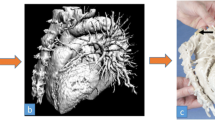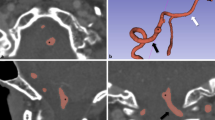Abstract
The use of 3D printing is gaining considerable success in many medical fields including surgery. Here, the technology was introduced for increasing the level of anatomical understanding thanks to the inherent characteristics of 3D printed models: these are highly accurate and customized reproductions, being obtained from own radiological imaging of patients, and are solid graspable objects allowing for free manipulation on part of the user. The resulting tactile feedbacks significantly help the comprehension of anatomical details, especially the spatial relations between structures. In this regard, they proved to be more effective than conventional 2D imaging and 3D virtual models. To date, an increasing number of applications have been successfully tested in many surgical disciplines, extending the range of possible uses to pre-operative planning, counselling with patients, education of students and residents, surgical training, intraoperative navigation and others; in recent years, 3D printing was also employed for creating surgical tools and reproducing anatomical parts to be used, respectively, as templates or guides for specific tasks of the surgery and individualized implantable materials in reconstructive procedures. Future expectations concern on one side the reduction of manufacturing costs and time to further increase the accessibility of 3D printing, while on the other the development of novel techniques and materials suitable for 3D printing of biological structures by which recreating the architecture and functionality of real human organs and tissues.




Similar content being viewed by others
References
Doi K (2006) Diagnostic imaging over the last 50 years: research and development in medical imaging science and technology. Phys Med Biol 51:R5–R27
Rengier F, Mehndiratta A, von Tengg-Kobligk H, Giesel FL (2010) 3D printing based on imaging data: review of medical applications. Int J Comput Assist Radiol Surg 2010(5):335–341
Pietrabissa A, Marconi S, Peri A, Pugliese L, Auricchio F (2015) From CT scanning to 3-D printing technology for the pre-operative planning in laparoscopic splenectomy. Surg Endosc 30(1):366–371
Tack P, Victor J, Annemans L (2016) 3D-printing techniques in a medical setting: a systematic literature review. BioMed Eng Online 15:115
Kim GB et al (2016) Three-dimensional printing: basic principles and applications in medicine and radiology. Korean J Radiol 17(2):182–197
Ventola CL (2014) Medical applications for 3D printing: current and projected uses. Pharm Ther 39:704–711
Gross BC, Erkal JL, Lockwood SY, Chen C, Spence DM (2014) Evaluation of 3D printing and its potential impact on biotechnology and the chemical sciences. Anal Chem 86:3240–3253
Kappers AM (2011) Human perception of shape from touch. Philos Trans R Soc Lond B Biol Sci 366:31063114
Meijer F, Van der Lubbe RH (2011) Active exploration improves perceptual sensitivity for visual 3D objects in visual recognition tasks. Vision Res 51:2431–2439
Marconi S, Pugliese L, Botti M et al (2017) Value of 3D-printing for the comprehension of surgical anatomy. Surg Endosc 31(10):4102–4110
Malik HH, Darwood ARJ, Shaunak S, Kulatilake P, El-Hilly AA, Mulki O, Baskaradas A (2015) Three-dimensional printing in surgery: a review of current surgical applications. J Surg Res 199:512–522
Li Chi, Cheung Fung, Fan Vei Chen, Ka Kit Leung G (2017) Application of three-dimensional printing in surgery. Surg Innov 24(1):82–88
Diment E, Thompson M, Begmann J (2017) Clinical efficacy and effectiveness of 3D printing: a systematic review. BMJ Open 7:e016891
Martelli N, Serrano C, van den Brink H et al (2016) Advantages and disadvantages of 3-dimensional printing in surgery: a systematic review. Surgery 159(6):1485–1500
Olivieri LJ, Krieger A, Loke YH, Nath DS, Kim PCW, Sable CA (2015) Three-dimensional printing of intracardiac defects from three-dimensional echocardiographic images: feasibility and relative accuracy. J Am Soc Echocardiogr 28:392–397
Kong X, Nie L, Zhang H et al (2016) Do three-dimensional visualization and three-dimensional printing improve hepatic segment anatomy teaching? A randomized controlled study. J Surg Educ. 73:264–269
Lim KH, Loo ZY, Goldie SJ, Adams JW, McMenamin PG (2016) Use of 3D printed models in medical education: a randomized control trial comparing 3D prints versus cadaveric materials for learning external cardiac anatomy. Anat Sci Educ. 9:213–221
Fasel JH, Aguiar D, Kiss-Bodolay D et al (2016) Adapting anatomy teaching to surgical trends: a combination of classical dissection, medical imaging, and 3D-printing technologies. Surg Radiol Anat 38:361–367
Jones DB, Sung R, Weinberg C, Korelitz T, Andrews R (2016) Three-dimensional modeling may improve surgical education and clinical practice. Surg Innov. 23:189–195
Garcia J, Yang Z, Mongrain R (2018) Lachapelle K (2018) 3D printing materials and their use in medical education: a review of current technology and trends for the future. BMJ Stel 4:27–40
Langridge B, Mamin S, Coumbe B et al (2018) Systematic review of the use of 3 dimensional printing in surgical teaching assessment. J Surg Educ 75:209–221
Rasheed K, Mix D, Chandra A (2015) Numerous applications of 3D printing in vascular surgery. Ann Vasc Surg 29(4):643–644
Pugliese L, Marconi S, Peri A, Botti M, Auricchio F, Pietrabissa A. Value of 3D-printing in the management of visceral aneurysms. In: Marone EM et al., editors 3D-printing for complex vascular disease, in press (Minerva Ed.)
Itagaki MW (2015) Using 3DP models for planning and guidance during endovascular intervention: a technical advance. Diagn Intervent Radiol 21(4):338–341
Waran V, Narayanan V, Karuppiah R, Owen SL, Aziz T (2014) Utility of multimaterial 3D printers in creating models with pathological entities to enhance the training experience of neurosurgeons. J Neurosurg 120:489
Grunert R, Strauss G, Moeckel H et al (2006) Elephant-an anatomical electronic phantom as simulation-system for otologic surgery. Conf Proc IEEE Eng Med Biol Soc 1:4408
Acknowledgements
The presented activity falls under the framework of 3D@UniPV project (http://www.unipv.it/3d), one of the strategic research area at the University of Pavia. The work is supported by the project PE-2013-02358887 on pancreatic ductal adenocarcinoma, funded by Italian Ministry of Health.
Author information
Authors and Affiliations
Corresponding author
Ethics declarations
Conflict of interest
The authors declare that they have no conflict of interest.
Research involving human participants and/or animals
This article does not contain any studies with human participants or animals performed by any of the authors.
Informed consent
For this type of study formal consent is not required.
Rights and permissions
About this article
Cite this article
Pugliese, L., Marconi, S., Negrello, E. et al. The clinical use of 3D printing in surgery. Updates Surg 70, 381–388 (2018). https://doi.org/10.1007/s13304-018-0586-5
Received:
Accepted:
Published:
Issue Date:
DOI: https://doi.org/10.1007/s13304-018-0586-5




